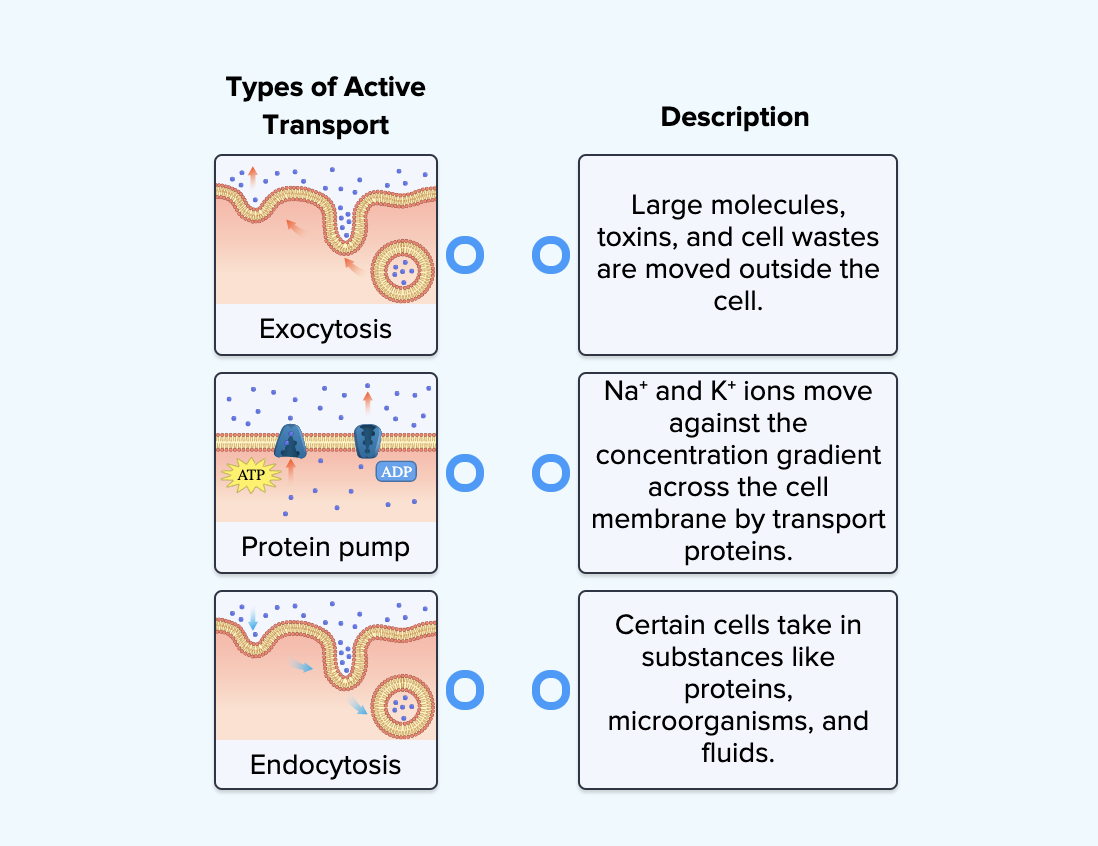Active Transport Definition
What is Active transport:Â It is a functional movement of ions, nutrients, or other solutes across a semi-permeable membrane against the natural flow of diffusion. It is defined as a process when a cell uses energy to move molecules against its concentration gradient. It can occur because the cell contains an ion pump that actively transports ions from one side of the membrane to another by using ATP as an energy source.
There are different active transport: carrier-mediated, primarily active, and secondary active. We can define it as the process in which cells move molecules against their concentration gradient by using energy to pump them through membrane proteins. It is also known as facilitated diffusion or secondary active transport because it requires an input of metabolic energy for movement from a low solute potential environment across a biological membrane to a high solute potential environment.
Types of Active Transport
There are different types, all involving the expenditure of metabolic energy:
1. Primary Active Transport
Primary active transport requires inputting energy from ATP hydrolysis into moving molecules across cell membranes against their concentration gradient. It is a laborious process that uses carrier proteins to move molecules across the cell membrane.
2. Secondary Active Transport
Secondary active transport requires the expenditure of energy used to move substances against their concentration gradient and is an uphill process. This type involves carrier proteins to transport molecules from one side to another, but it needs more than just ATP hydrolysis for the movement against the ion concentration gradient.
3. Symport
Symport is a type where the transported substance and an ion share the same carrier protein. The symport transports both substances in the same direction.
4. Antiport
Antiport is also a type of secondary active transport that requires more than just energy from ATP hydrolysis for the movement against a concentration gradient; it involves transportation across the cell membrane but in the opposite direction.
5. Endocytosis
Endocytosis is a type of transport that occurs during phagocytosis, pinocytosis, and receptor-mediated endocytosis. In this process, the cell membrane engulfs molecules from outside to bring them inside of cells for various reasons, such as nutrient uptake or waste disposal. This process is called endocytosis.
6. Exocytosis
Exocytosis is a type of transport that brings molecules from inside the cell membrane to outside for various reasons, such as nutrient uptake or waste disposal. This process is also known as exogenous secretory pathways, and it occurs at the plasma membrane, where vesicles fuse with their target membranes.

Mechanism of Active Transport
It is the process where molecules move against the concentration gradient. It requires energy obtained by converting chemical energy into kinetic or mechanical work, such as ATP synthesis and electron transfer.
Transport proteins use in this transport to carry out their processes, including moving nutrients, ions, and other substances across biological membranes (cell walls) from one side of a membrane to another or within the same cell.
Transport proteins contain binding sites which are specific to particular substances. For these substances to move across the cells, they must interact with transport proteins with appropriate binding sites.
In addition, pathogens also used this transport, such as bacteria and viruses, to enter cells. The viruses attach to the cell membrane and inject their contents into the host cells, while bacteria have various methods of transferring through the cell walls or membranes to invade a particular host’s organ(s).
Examples of Active Transport
1. Sodium-Potassium Pump (Na+/K+)
Sodium-Potassium Pump (Na++/K+) is the transport type in which sodium cation (positively charged ion) passes through the plasma membrane to the outside of the cell, and potassium cations are passed simultaneously inside the cell.
2. Sodium-Glucose Transport Pump
Sodium-Glucose Transport Protein is the example that explains types of transport. Sodium-Glucose Transport Protein is a protein that binds to Na+ and glucose molecules, using energy from ATP-binding cassette transporter family members. And also, Sodium-Glucose Transport Protein transfers these molecules against the concentration gradient, from the higher concentration of Na+ to lower concentration.


